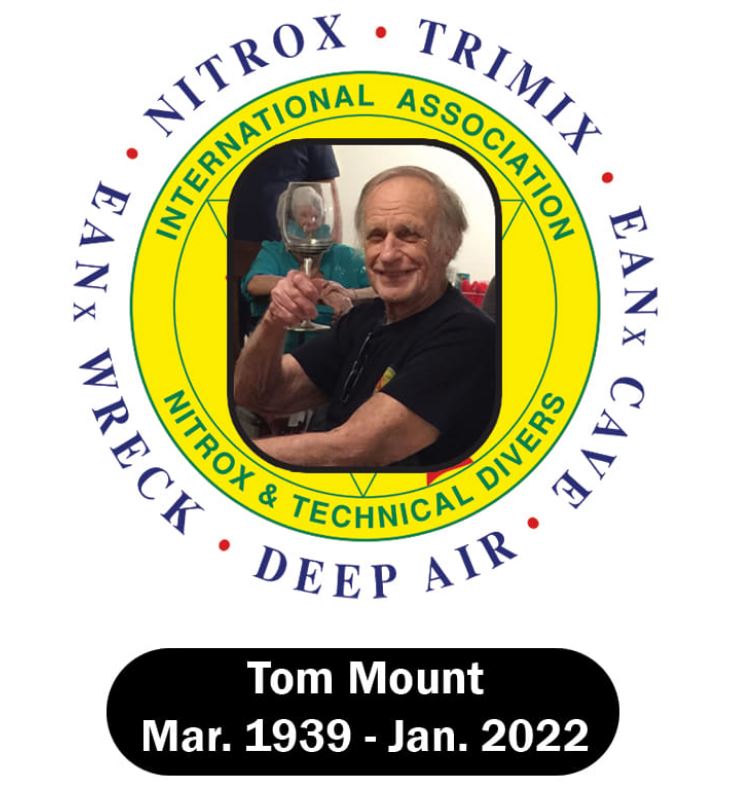Laughing Gas by any Other Name!
OK, so it is a little while since I last wrote a piece on training or continuing my educational diving journey, so now a little more self-indulgence if you will permit me…..oh, and even if you won’t, as you can easily skip this, continuing to read is in your own hands…..
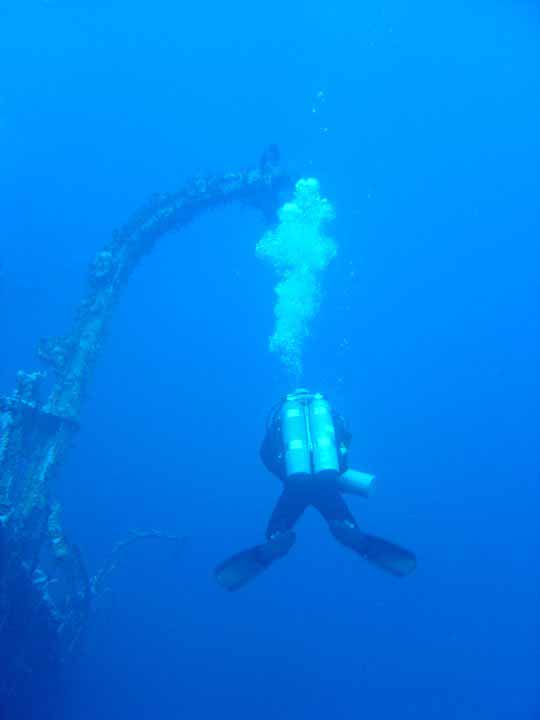
I had done a considerable amount of Nitrox Diving by the close of 1999 and had begun to take things into the “Technical Nitrox” realm, I don’t suppose there is an official determination for what does or doesn’t delineate between Nitrox as a safe gas for diving, and Nitrox as a means of extending dive times, essentially they are entwined. I would, personally, only classify by a particular dive, and the intentions of the diver and the chosen gas mix or dive site, and the aims and conditions implicit. For the purposes of this piece, and bearing in mind I was both an IANTD Nitrox instructor and a PADI Nitrox instructor by this point, and had a background as a BSAC Advanced Instructor…….which meant I could pretty much please myself what I called the diving I was personally doing, without causing a crisis of conscience! If I was extending the dive-time or had a partial pressure above 0.4 then I was carrying out an IANTD Nitrox dive, if the PPO2 was 0.4 and I was using up the gas from the IANTD Nitrox dive….I was diving PADI…..anything else was a “rogue” BSAC outing!

It kind of shows where the industry was at the time too, IANTD knew what they were talking about, the foundation of their courses was Dick Rutkowski, Billy Deans and Tom Mount, from a start point in 1985 from the commercial off-shore diving gas management skills, practically transferred into the deeper or more technical dives of the recreational diving arena. When Kevin Gurr and Phil Short (and a few others), brought the IANTD training to the UK dive scene in the early 90’s, it stepped up the arguments across the recreational dive landscape and had everyone talking. It would not be until around 1994 that BSAC would admit that many of their divers were hemorrhaging across to IANTD to learn the art of Devil Gas Diving, and, in 1996, almost a decade after Nitrox introduction to the recreational diving world, PADI would capitulate it’s “air diving only” stance and develop its “EANx” courses. Having started Nitrox diving with Don Shirley in 1996 I could say I was, at least, early on the uptake, and by May of 1997 I had reached instructor status with IANTD, a milestone in my diving career and one I was secretly a little proud of!
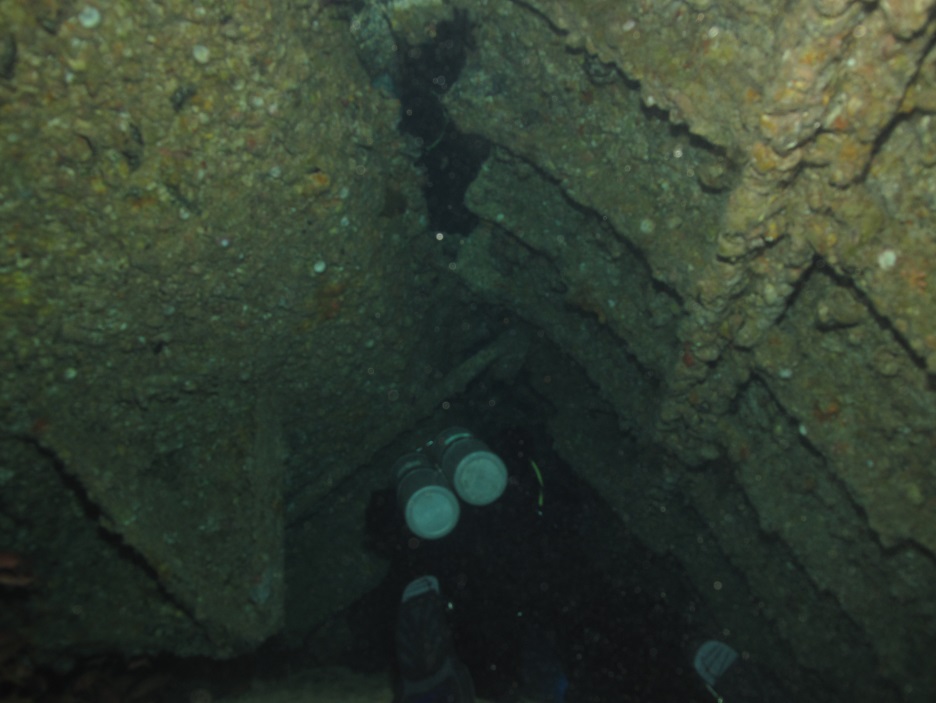
By 1997 I was using twin 12l cylinders to pack in as much gas as I could carry, I was using side-mount gasses in one or two 7L 300Bar cylinders to ensure extended decompression stops could be undertaken, and I think it’s safe to say I had “strayed” into “Technical Nitrox” territory. This wasn’t every dive by any means, but it was a way of significantly extending wreck dives, and I loved that. It was still a challenge to get Nitrox fills, but, with Stoney Cove just an hour down the road that wasn’t a huge issue when they started supplying gas mixes, and deco gas to those qualified to use it, and there was Budgie at Portland for fills on the dives I loved from my Army days with Toots. I was never a “deep” junkie, one of those divers with something to prove, who constantly prattled on about “60m dives on the Medina in raging channel currents” to try to impress at the bar in the evening, but I was spending 30 or 40 minutes on the wrecks I was diving, and felt far better than I would have diving air. Don Shirley had departed for South Africa to set up an IANTD franchise by 1997 and I had met Angus Cowie and Bob Scullion, Bob ran a dive centre out of South Shields and Angus was training him up on Technical Nitrox and something called “Tri-Mix”….now I’m a curious kind of bloke as you might have guessed………
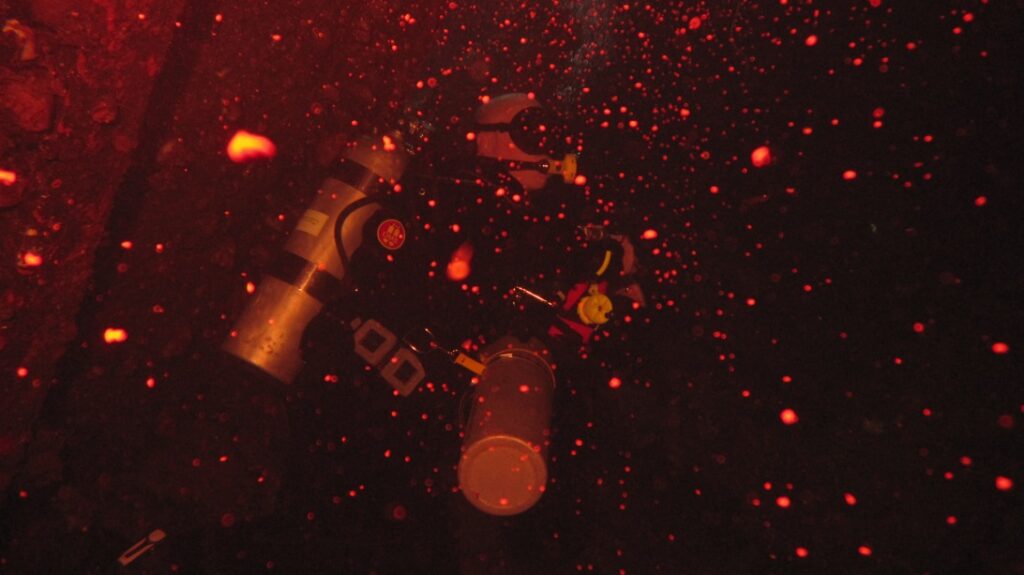
I had a couple of students that were interested in some deeper diving, they had enjoyed the IANTD Nitrox course I’d ran and were keen on the Advanced Nitrox course, as I took them through the decompression gas swaps at Stoney Cove and had them spend time at 36m on the hydro-box they were shaping up pretty well. We had set-up a deco bar and hung a reserve gas cylinder from it, and run through a dozen reg swaps apiece, all done well, despite the cold after 15 minutes down at 36m in 4’ water, it was winter, somewhere around January/February, what better time to spend twice the time in the water and see if you could still perform skills n drills………. By Christmas of 1999 and New Year of 2000 they were approaching readiness for a trip up to Wastwater in Cumbria, a good shore dive spot which I knew would not get blown-out like many of the South Coast spots in winter, but also hellishly picturesque and there was a bonus as 50m was achievable fairly close to the shore. Now it took to April of 2000 to get everyone organised to get up to Wastwater, but in-between I’d managed to stagger each of them to complete refreshers at 36m in Stoney, and up to Jackdaw Quarry at Capernwray to do some kit swap-outs and problem solving, so by April they were as ready as they would ever be
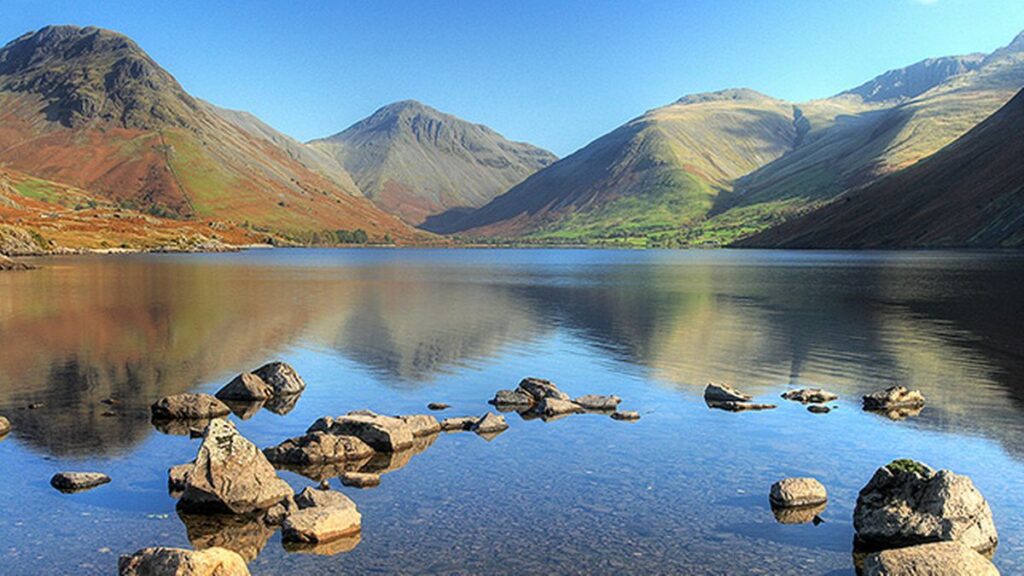
The trip up to Wastwater is a long one, the journey (primarily up the M6), is unremarkable, until you get around Lancaster when it starts to become far more pleasing on the eye. Once above Lancaster you need to turn off the M6 and pick up the A590 which becomes more and more scenic until you are in the mountains of the Lake District proper, away from Windermere and the tourists, not that there were many tourists about in early April of 2000! After Newby Bridge the drive to Broughton is gently winding, and once you pass Eskdale you start to get into the hills for real, it doesn’t take long until you can see Scafell Pike and then drop down to the lakeside road, with Wastwater to your front (and within a couple of minutes it’s on your right), as you pass from the Southern end a half mile up and see the odd car parked up, where fell walkers have started out for a day in the hills. There is a hummock on the right after half a mile or so, grassy but with bare rock too, that’s where we parked up and where you will find an area of gravel and shallows stretching out 5 to 10m or so, and it’s here most enter the lake, and immediately below that you find what was an oddly BSAC kind of feature….the Gnome Garden
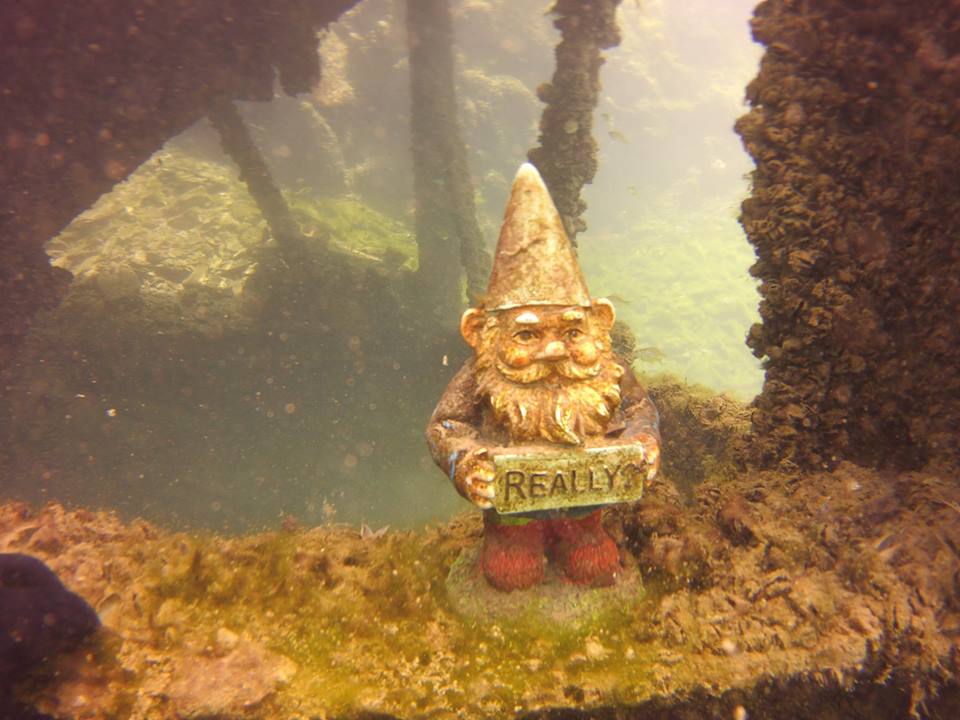
Yes, you read that right, there are perhaps a dozen (or were) garden gnomes and a little fence placed in Wastwater which were, when we dived it, at around 35m or so as I recall. Now I will let my dive log describe the dive: “02/04/00 Wastwater Cumbria Deep Dive Down to the Gnome Garden for bottom time after setting up a stage for deco. Viz 5m-ish Air In 230 Out 110 W Temp 8’ Buddys Darren & Jason” You can tell how excited I was from the description…… Now I may be pushing someone’s buttons with this but I don’t care, I cannot see any reason for anyone to take a garden gnome into a pristine glacial lake? I struggle with a mentality that would consider that either appropriate, or entertaining? Is there much to see in Wastwater, no, not really……. it is more a dive for the experience of the surroundings, the adventure of the trip to get there, and the feeling of isolation and peace at such depths, within of course the dive parameters you set to start with. I wish people would keep their litter to themselves, if you have a garden and you want a gnome in it, for whatever reason, fine….it’s your garden, crack on….. But, when you are as fed up with your stupid gnome as anyone else is already, FFS put it in a bin, give it to a friend (to take stupid holiday snaps of in exotic places to “amuse” other like-minded “people”)….whatever, but keep it away from dive sites….all of them! The second dive of the day went a similar way “02/04/00 Wastwater Cumbria Deep Dive to Gnomes again this time saw a dozen plus up to deco station & out Viz 5m Air In 110 out 40 W Temp 8’ Buddy Angus” Another tellingly short descriptive……….
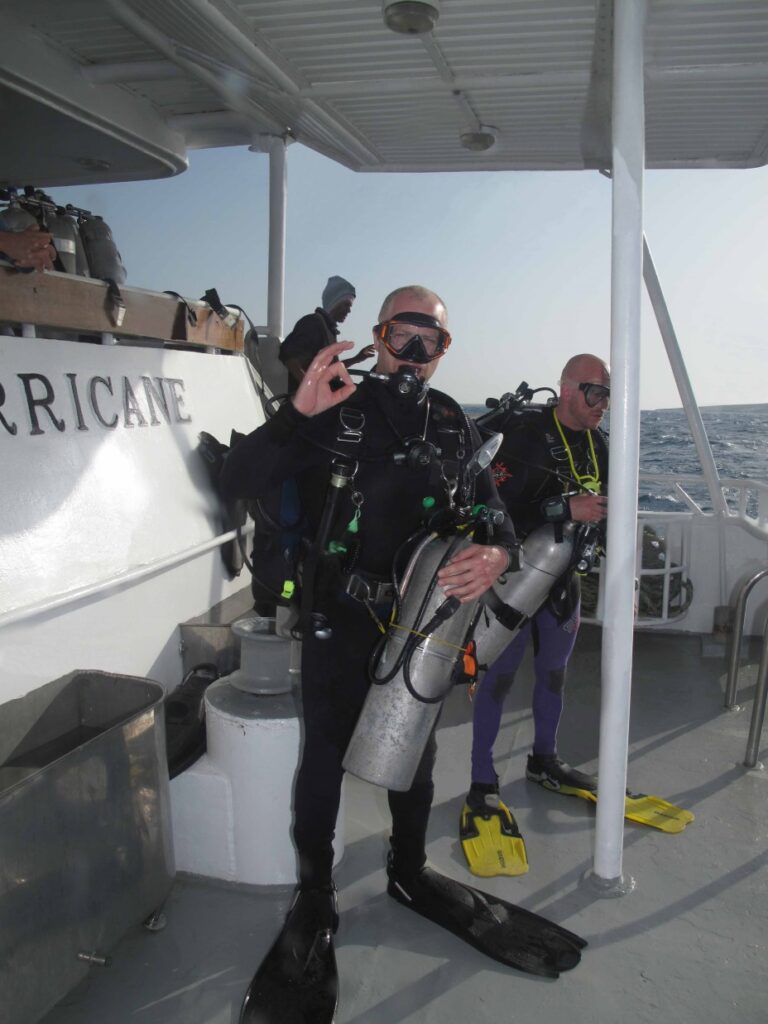
Perhaps it’s just me, but I see diving as one of the last places on Earth where the mindless throw-away mentality of the ignorant is (or was) seen….. sadly now, more and more, there is litter appearing on dives, it’s a tragic result of our abuse of this planet and its resources……. Anyhow, let’s focus on the positives more eh! After the second dive I got chatting to Angus and he suggested giving Tri-Mix a go, it wasn’t as if I hadn’t heard of Tri-Mix, it features in IANTD training throughout the courses, with regards to kit configuration and gas mixes to suit dive depths and Oxygen parameters. So I agreed to run through the introductory course with Angus and take a dive with him in a month’s time off South Shields with Bob & the team. The book learning was simple enough now, Don had killed my math demons and I could work through gas mixes and Oxygen toxicity, adding Helium into the mix was simple enough, after all, I would not be blending the gas, just analysing it and taking account of the decompression obligations of it. The impression is that Helium is added for deeper dives, quite correct, however the impact of adding Helium is not usually quite so well understood without an actual course behind you, Helium takes longer to wash safely out of the blood, meaning your decompression will be more intense, with more stops and longer durations, as you progress through the water column. The balance of less likelihood of Oxygen toxicity and the resultant potential unconsciousness or loss of function, is weighed against time required to surface
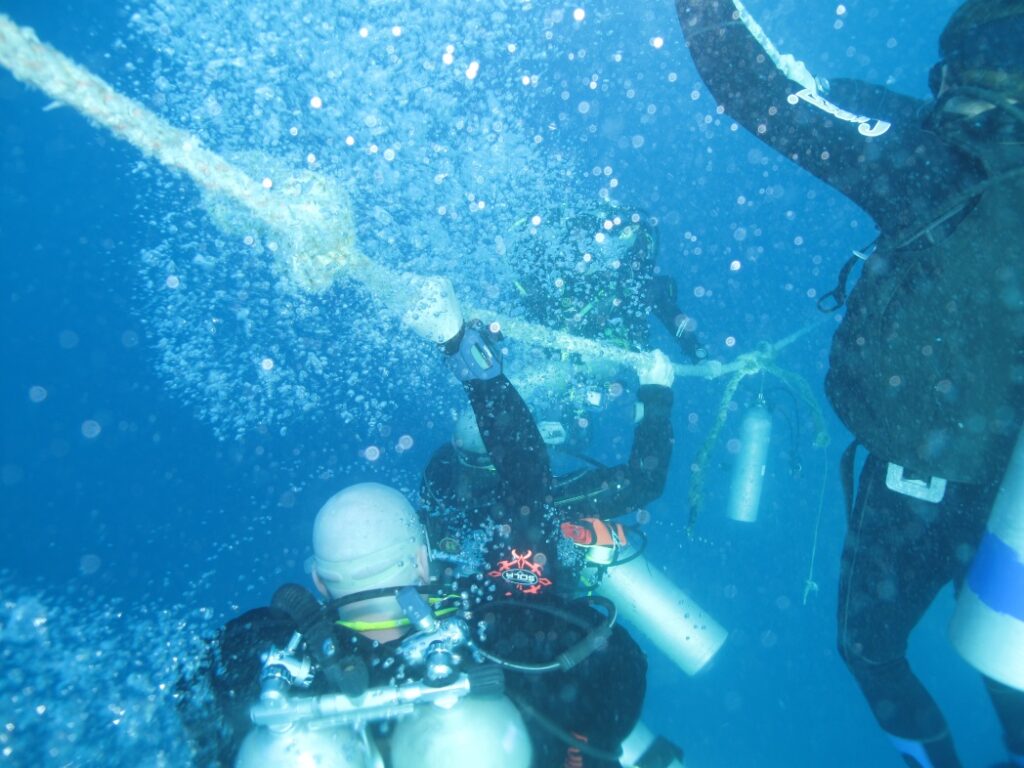
Tri-Mix was an obvious extension of the diving I was doing, there had been a gentle and natural progression to deeper diving which I didn’t particularly recognise at the time, even though it was happening to me. My first Tri-Mix dive was with Angus off the South Shields coast on a wreck Bob had only just discovered and had yet to identify, it appears in my Green Log as “Tri-Mix Dive Newcastle” and transfers to my little Red Log as it was a wreck no matter what it was called…. “21/05/00 SOUTH SHIELDS UNKNOWN VIRGIN WRECK Off South Shields (Direct in line with white hotel & tower) A “Massive” wreck @ 54m bottom depth. We hit in at the shot at 50m and only managed 15min bottom time on Jasons air consumption. The only piece we saw was the hull which stretched off well beyond the 10m viz even in the dark. I really enjoyed the descent & had a great dive even on the crowded shot & deco station, Jason missed his 12 9 & 6m stops & could have died” I had to stay to complete my stops, it’s a brutal thing to leave a friend to his fate, I had tried to hold Jason on the shot but couldn’t, his suit valve malfunctioned and he was just too buoyant. The only saving grace, and the reason he is still with us today, was the short duration of the dive, Jason had hoovered his gas, we called the dive half way through expected bottom time to ensure he had sufficient to achieve his stops and transfer onto 80% deco gas…….. It saved his life, but the journey back to shore was a tense one, Jason in a sleeping bag on oxygen the whole way, luckily without any bend…..and very luckily he stayed that way
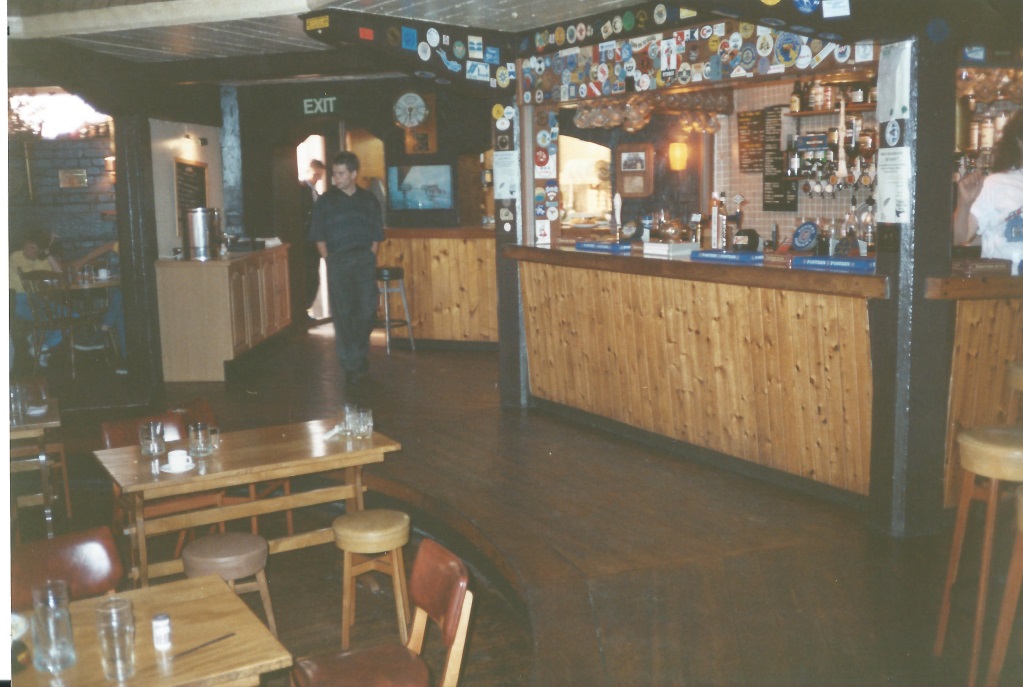
Jason’s nightmare ascent had not put me off Tri-Mix, I still dive it (despite being over 60 now), when there are good deep dives to do, but you will hear of some of those reading elsewhere in this diary of a madman. I think there is something more to be said here too, the key is that Tri-Mix is just another tool in the box, it has an advantage in what would be considered by most to be very deep dives, those in excess of 50m where Air and Nitrox are no longer a way forward, indeed where Air itself starts to become toxic, and adding Oxygen would compound the problems. Nitrox works down to around the 40m mark (depending on your mix, and the PPO2 limitations set by your agency), 21% “normoxic” Air can be, and is, used between 40m and 60m, but with an increased likelihood of narcosis, the performance impacts of which can manifest in various ways, but are most often described as similar to the effects of too many beers at a bar….. poor judgement, impaired physical performance and, often most debilitating, an increasing lack of clarity or increasing state of confusion. Tri-Mix offers an “Equivalent Narcotic Depth” in almost the same way Nitrox offers an Equivalent Air Depth, just by using an additional gas, Helium, in the mix……the results are simple, less chance of narcosis (through partial pressure of Oxygen above 1.4 (PP02)), the down side of the addition of Helium to your breathing gas……longer decompression requirements……. And, as Helium is an expensive gas, a far more expensive dive!
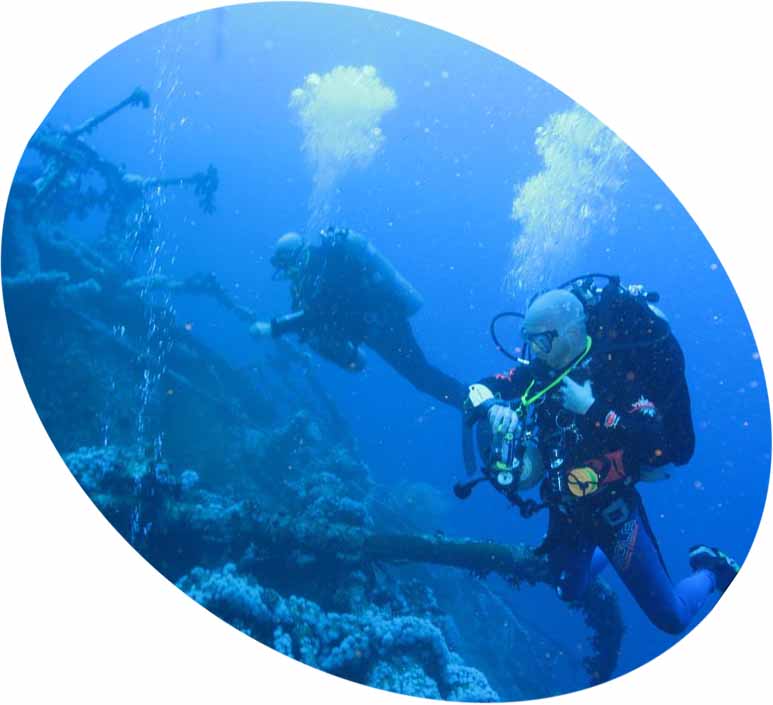
Deep Decompression Stops, SS Aida, in the Red Sea (Photo: Courtesy Derek Aughton)
Whenever Tri-Mix comes up in my thoughts, I drift back to my first dive course ever, sat at the bar in Fort Bovisands after a dive off the Glen Strathallen at around 10m or so, I was talking with two very experienced BSAC divers, senior members of their respective clubs, they were doing deep dives on Tri-Mix which was practically unheard of in recreational diving at that time (1990), they were adamant they would likely be ostracized if the others in the club found out, and no doubt they were right, but what I recall most was that these were not typical thrill-seekers but studious and kind of intense people, a recently separated woman and her new boyfriend, I mention that only as, to those who might know the circumstances, it may ring a bell in BSAC circles and verify the very early use of Tri-Mix in recreational diving at the times I recall. The conversation was detailed in regards to planning and equipment, but my personal take and comment to the divers at the time was “I don’t ever see myself diving beyond 20m, unless there was something really compelling to see” …… Famous last words….. I have often recalled that conversation whilst sat on long deco stops too
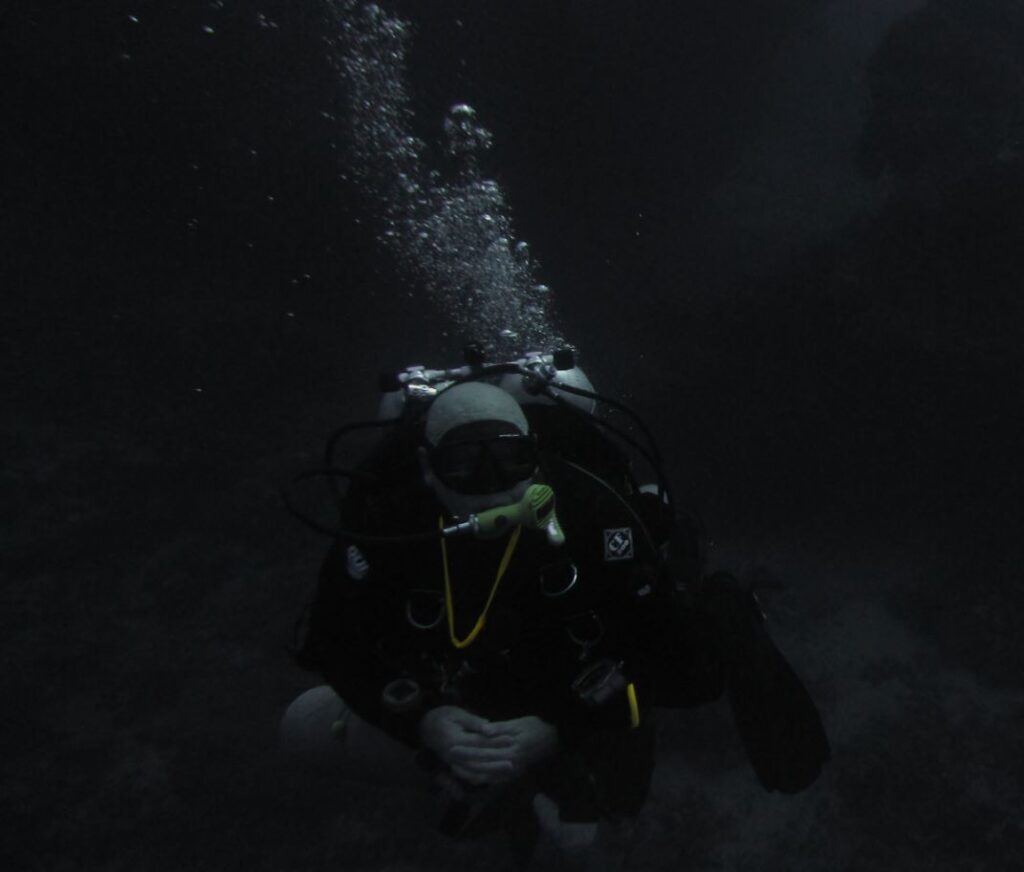
Without the pictures the story would not be half as interesting, my sincere thanks go to those who’s skills far surpass my own in underwater & land photography: Derek Aughton, Mark Milburn of Atlantic Scuba, Underwater Adventures and Gary Newbold. And for the scenery on land: Mr A Stephenson
Epilogue: 17th January 2022
It is with Deep Sadness that we say farewell to Tom Mount, Founder of the International Association of Nitrox & Technical Divers. Tom was an Inspiration to generations of Divers including myself and Tom will be missed by the Diving Industry and those of IANTD alike
